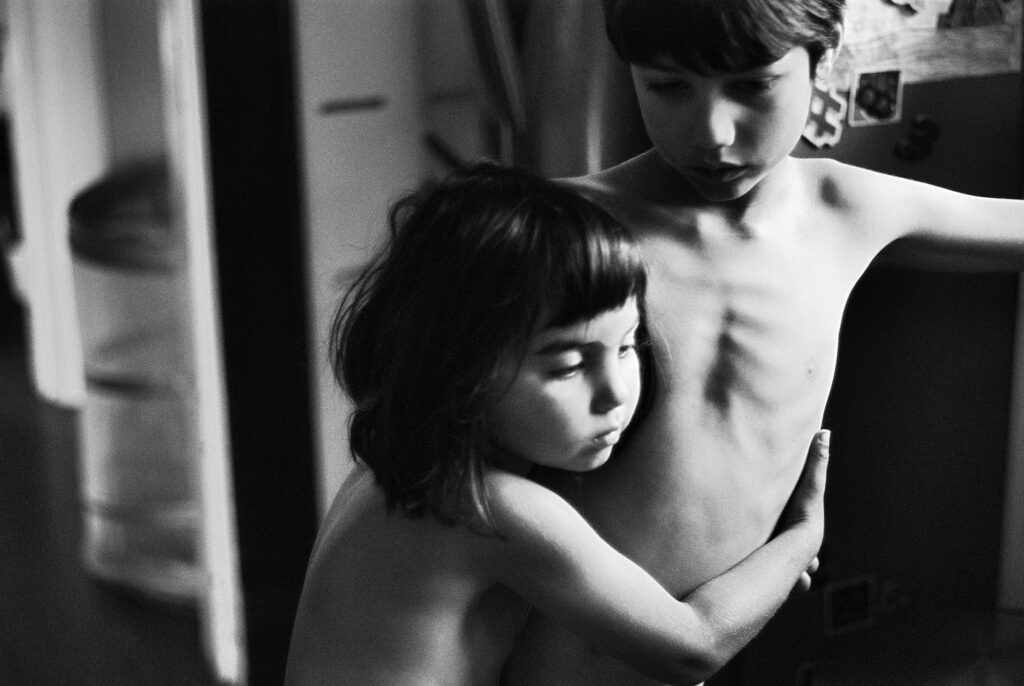
After taking photographs for over 30 years, I’ve started to understand my work in a new way. In a recent conversation with my therapist, I asked why I hadn’t processed my grief and trauma through photography in recent years. He said, “You were doing it from your head—now your gut is following.” That simple insight helped something click. I’ve begun to approach my work with more honesty and vulnerability. It feels more grounded now—less about control, more about connection.
Innocence is a body of work that began during the early years of parenthood, when life was shaped by the routines and emotions of raising young children. I was figuring out how to be a mother, a woman, and still my own person. The camera helped me stay present. It became a way to observe, to reflect, and to hold onto fleeting moments.
I photographed my children at home—in quiet moments, during play, in closeness and in conflict. The pictures explore the contrasts of childhood: its tenderness and unpredictability, joy and frustration, connection and independence. While childhood is often idealized, I wanted to show a fuller picture—one that includes the messiness alongside the beauty.
The relationship between my son and daughter naturally became central. Their closeness, their energy, and their differences made for moments that were both personal and revealing. At the time, I didn’t know how their relationship—or their identities—would evolve. I was simply documenting what I saw, trying to make sense of it through the lens.
Years later, revisiting the work brought new perspective. My younger child had come out as trans, and the photographs began to carry a different kind of significance. I asked if he was okay with me including images from his childhood, and he said yes. He reminded me of something he once told me when I asked if it felt strange to see those photos:
“That’s who I was then. If anything, I look at pictures of my older brother and see what I could have been.”
That moment stayed with me.
I began to wonder if I’d missed signs. He’d disliked dresses, loved his brother deeply, had a strong will—but I wasn’t looking for clues. I was simply trying to be present. I realize now that these photographs unintentionally became a quiet record of a journey we hadn’t yet understood.
It’s been a few years since he came out. We’re still learning. I’m struck by his courage and his clarity, and by how important it is to be seen for who you are. Looking back, this project now feels like it holds more layers—about identity, change, and the ways we grow.
With my children now in their teens, Innocence feels like the closing of a chapter. The work is about love, memory, and the passing of time. It’s about seeing—first through the camera, and later, with a deeper understanding of what was always there.
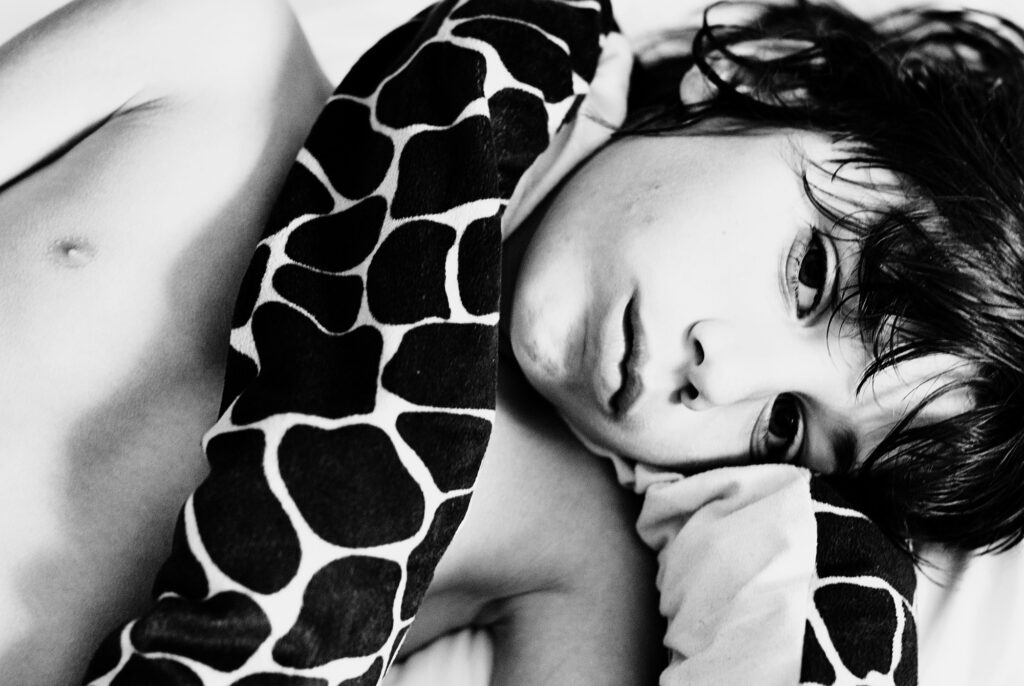
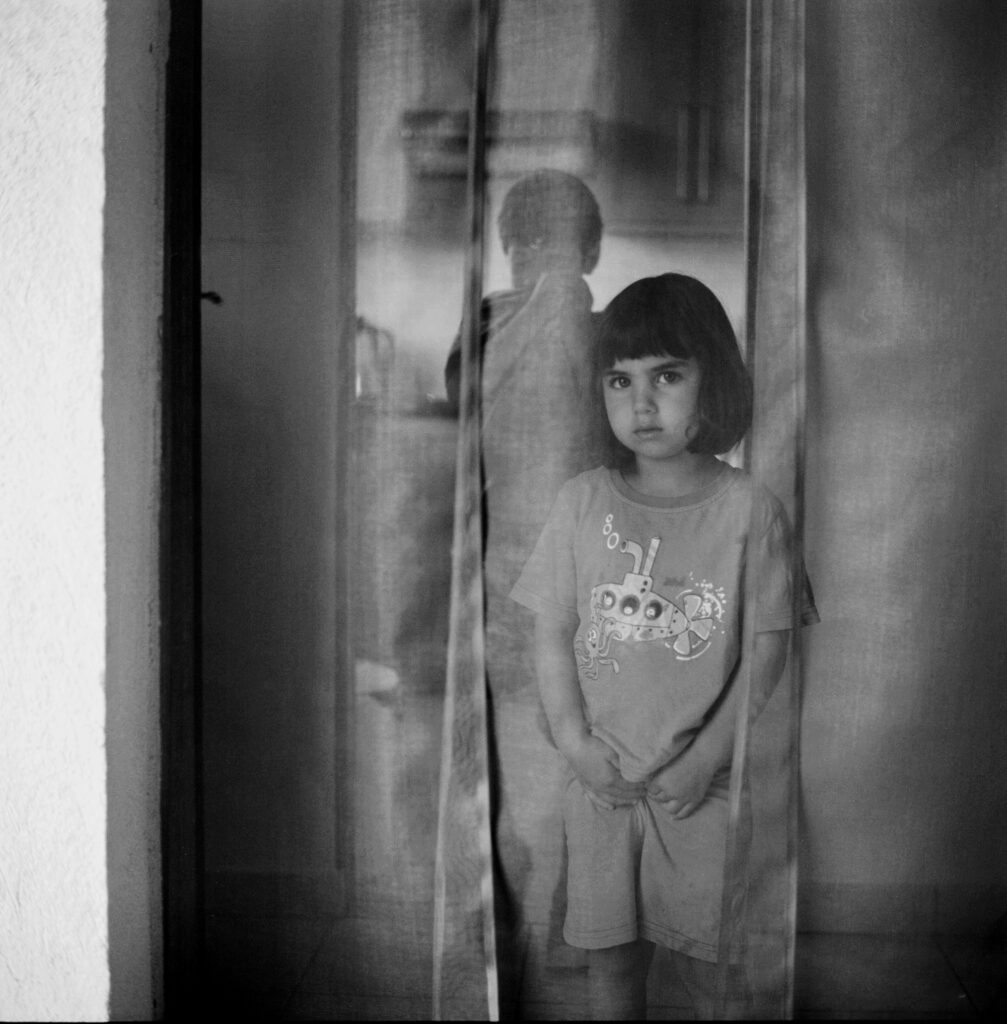
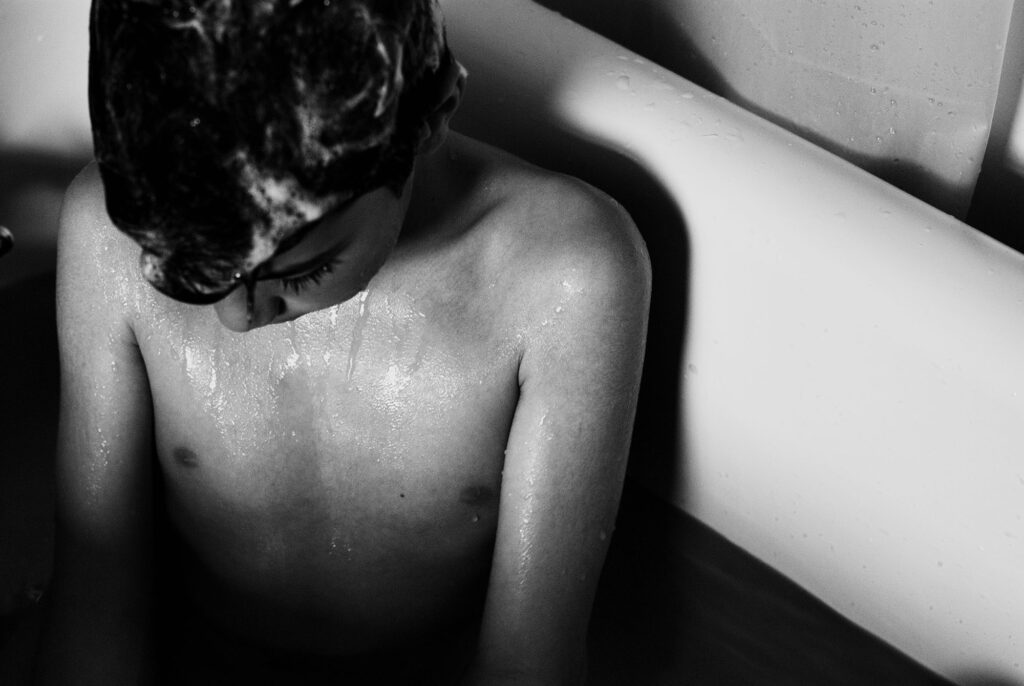
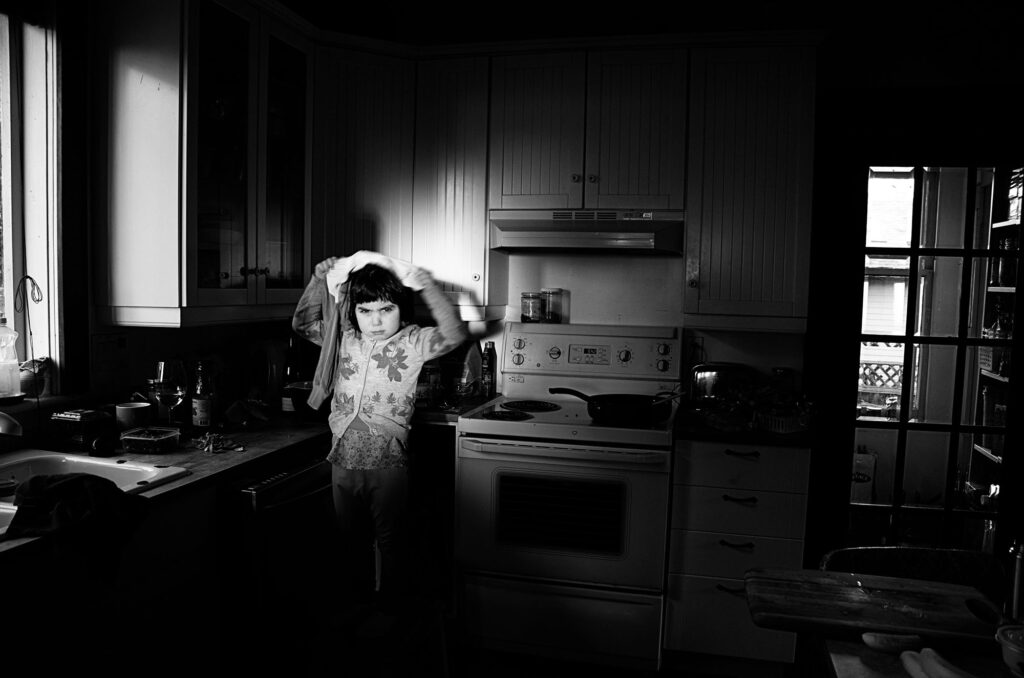
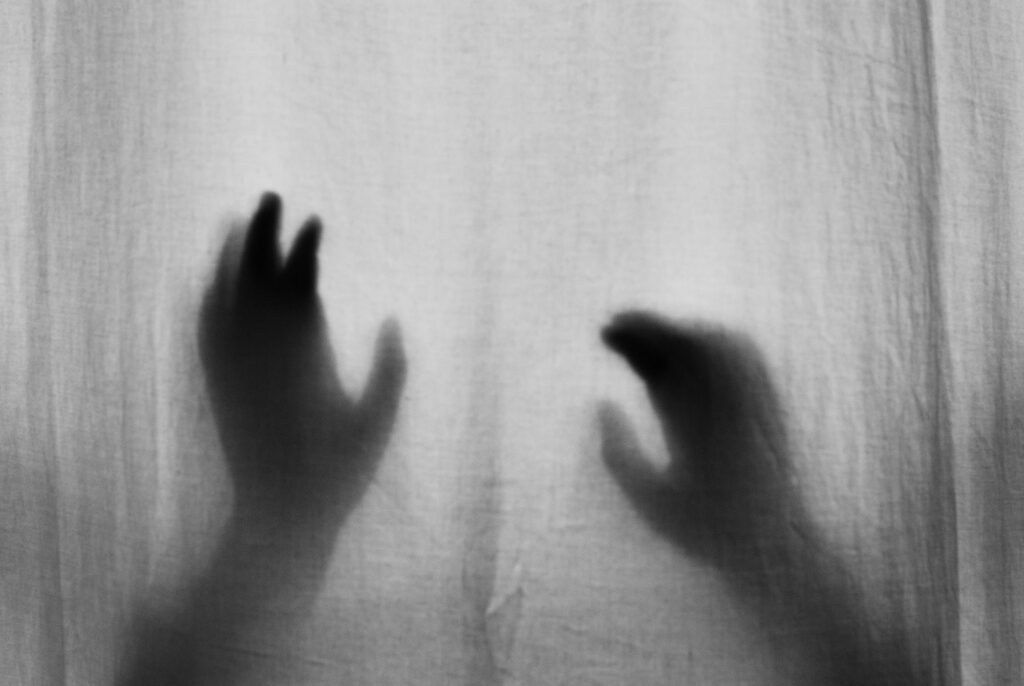
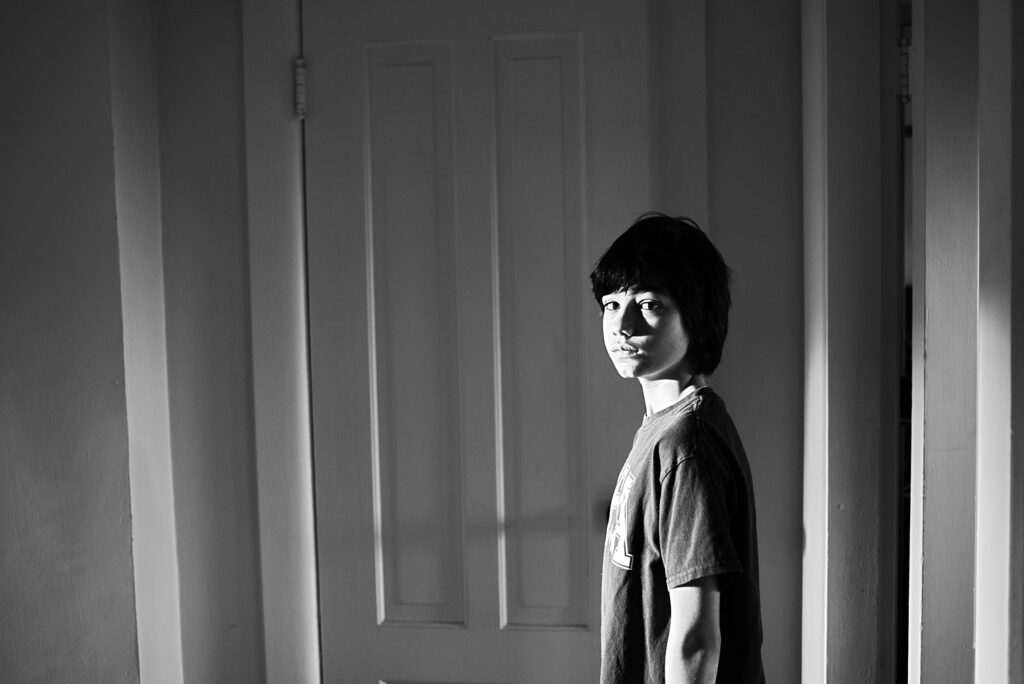
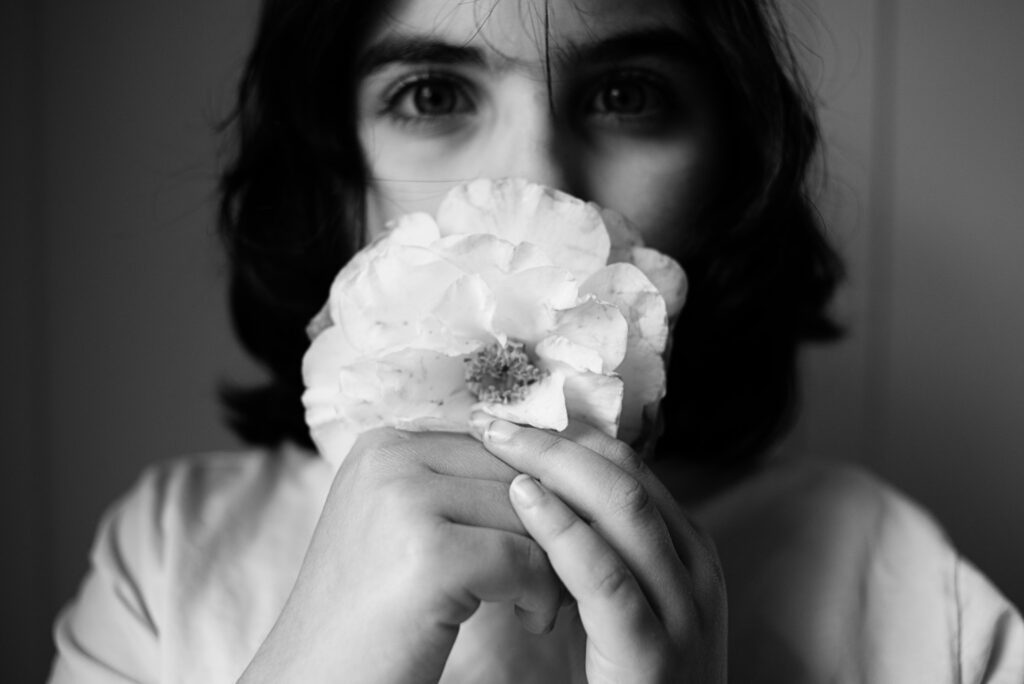
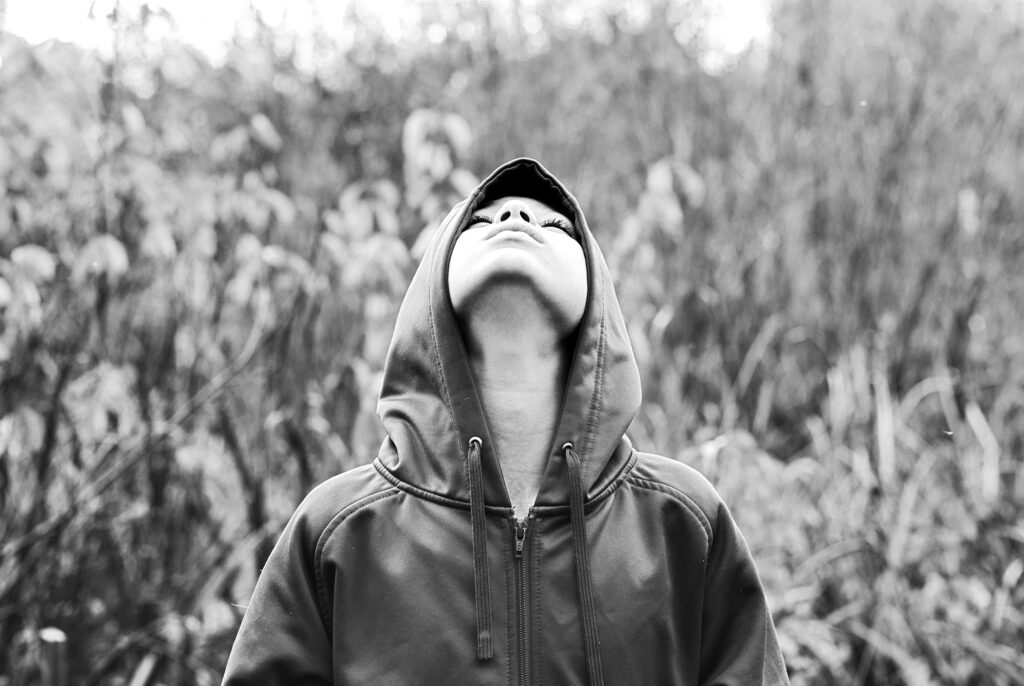
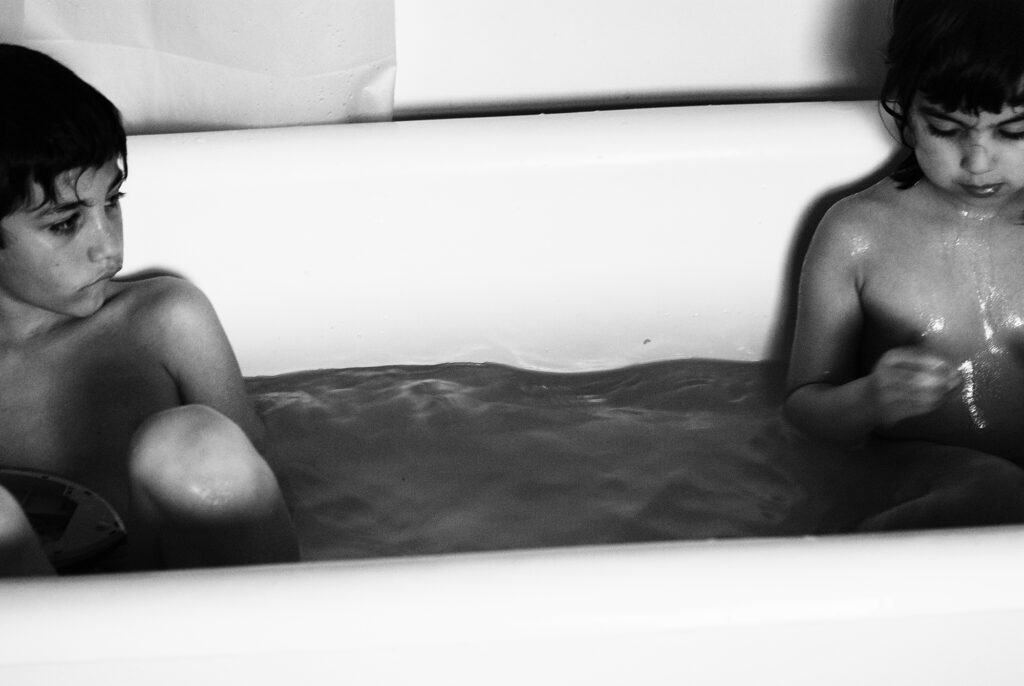
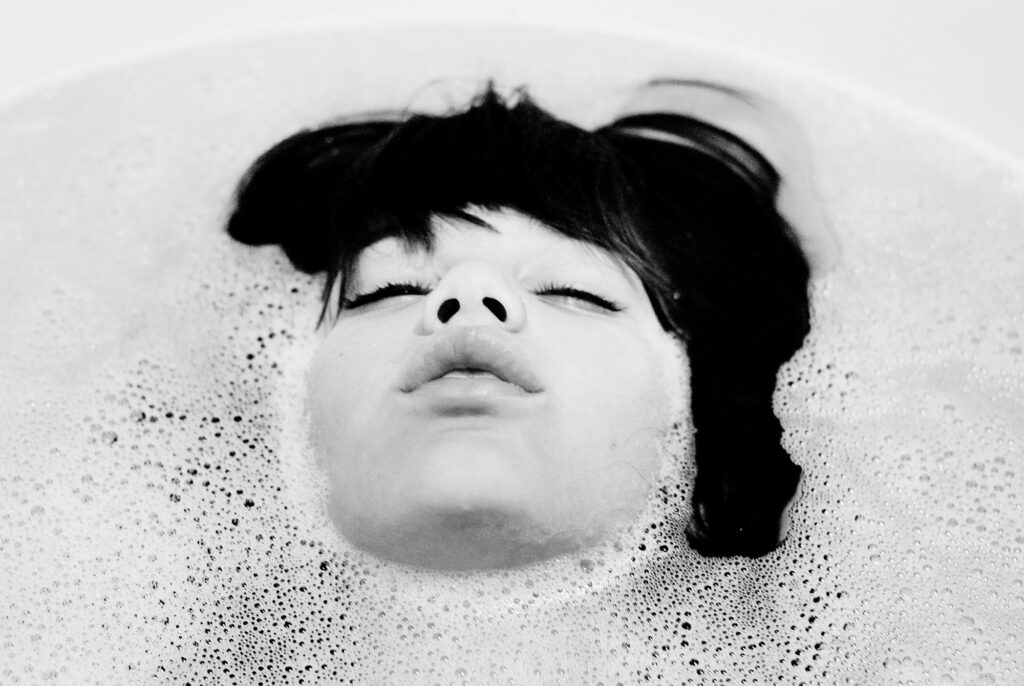
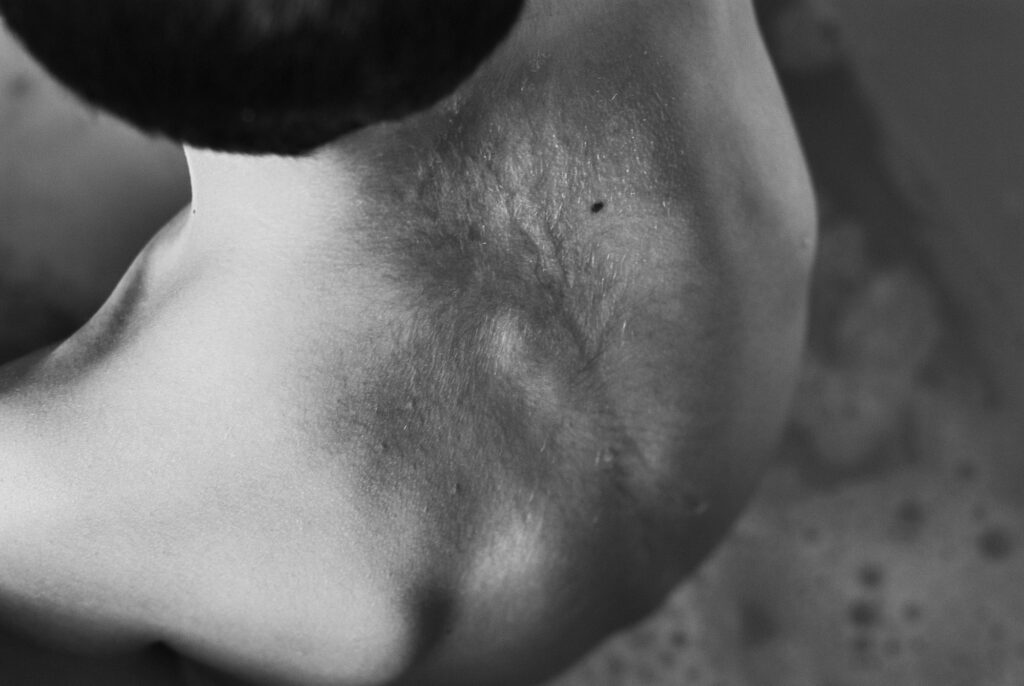

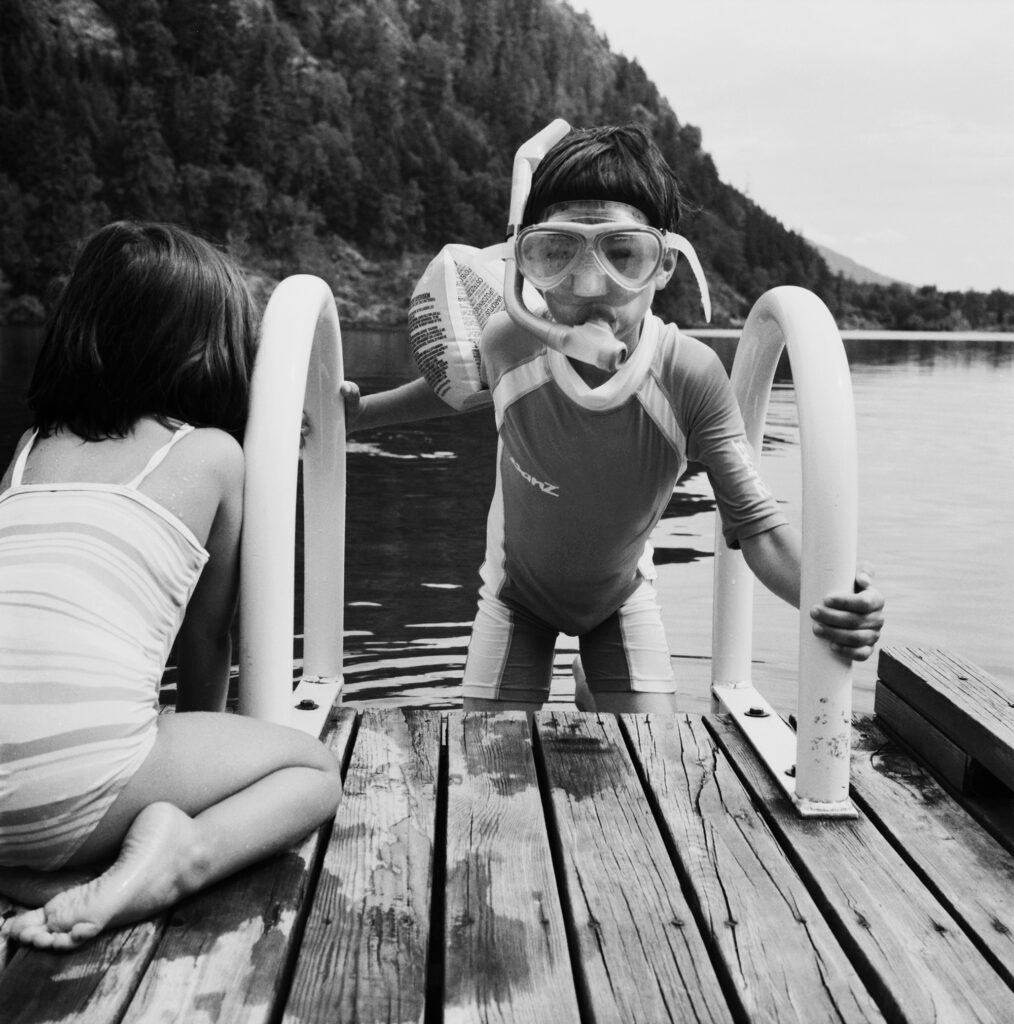
Excerpt from Blue Sky Gallery Blog – 2015 Pacific NorthWest Drawers
Though Tamar Haytayan’s images focus on the private sphere and the relationship between her daughter and son, the work also expands in meaning through text: each image is titled “Innocence,” while often picturing the darker, grittier sides of childhood. For instance, the first photograph, “Innocence 5,” from 2012, shows her daughter with a towel on her head in the kitchen, her face curled up in an indignant snarl. The foreground and background are shrouded in heavy black and the camera is slightly tilted, giving the image a disorienting, almost nightmarish quality. The literal darkness of the image, combined with the discomfort of the subject and the strange camera angle, undermines the ideal of purity, creating instead a more complex, often fearful and angry, depiction of childhood. The second image, “Innocence 1,” shows one of the artist’s children’s hands draped over the lip of the bathtub. Grit lines the fingernails, and the monochromatic nature of the print masks the color of the hand: it could be muddied with dirt, but its dismembered quality suggests something more violent. Not all of Haytayan’s photographs fixate on such darkness: one image, “Innocence 7,” pictures a hug between the two siblings, with soft, sleepy light; “Innocence 2” shows her son with sun through the window illuminating his bright eyes, giving his face a painterly, classical quality. However, the two on display this week do highlight a trend in her work to subvert traditional ideas of childhood innocence, alluding to contemporaries like Sally Mann and harkening back to pictorialists such as Julia Margaret Cameron.
Both Drawers photographers on display this week incorporate text in ways that challenge the traditional duality of text and image, integrating them through literal photographs or through titles, and thus allowing the work to expand in meaning.
– Molly Walls